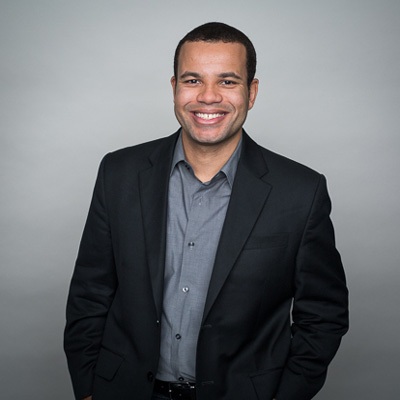Reimagining School with New Classrooms’ Chris Rush: “The Hole in the Middle”
Topics

Today’s learners face an uncertain present and a rapidly changing future that demand far different skills and knowledge than were needed in the 20th century. We also know so much more about enabling deep, powerful learning than we ever did before. Our collective future depends on how well young people prepare for the challenges and opportunities of 21st-century life.
A look at what drives New Classrooms' Chief Program Officer to keep working to solve the persistent problem of unfinished learning in middle school.
New Classrooms Innovation Partners designs and collaborates with schools to implement innovative learning models. Our organization recently published The Iceberg Problem, a report on the problem of unfinished learning in middle school math.
Amid the holiday season, New Classrooms Chief Program Officer Chris Rush shared some reflections on the thinking that drives these efforts—and why he stays at it.

New Classrooms' Chris Rush
What do you see as the key factors or inflection points in your life that led you to establish New Classrooms?
My dad was a math teacher. My wife was a math teacher. I used to teach Earth Sciences at a nature center outside of Philadelphia, so this has always been my world. I worked on a few tech startups during the 90s—in one case, we used to make the CDs that came in the back of textbooks. Once I stepped down as head teacher at the nature center, I worked at IBM for five years. But I missed the education side of things and ultimately discovered the world of ed tech. I eventually wound up at the New York City DOE, where I met Joel (Joel Rose, co-founder of New Classrooms). We ended up engaging in a public-private partnership to start School of One, and the chancellor (Joel Klein of New York City Public Schools) suggested we spin it out into something larger. So we did.
Why do you believe that innovative learning models are critical to supporting equity in education?
If you have a health issue—let’s say you break your leg—whether or not it’s a hairline fracture or a full break, there’s a treatment for that. You go to the doctor and you expect that they’re going to help you recover and get to where you need to go. You’re going to be ok. My hope for the future of education is that we come to expect a treatment, service, or plan for every last kid. The time horizon may shift, but there’s a plan for you, just like in health care. I don’t think the education in general is there right now, but innovative learning models can get us there.
Today, can we speed up a kid’s learning, or figure out systems to improve teacher practice, or make the economics work? Yes, in small pockets. But there are clearly some students who have more advantages than others. If we do our work right—if we create something that is effective, adoptable, and accessible enough that it can’t help but disseminate—then every kid will have the same advantage: the opportunity to learn within their zone of proximal development and to accelerate their growth long-term. That’s equity.
Looking back on the organization’s origins, where was the most obvious disconnect between your expectations and reality?
Originally, we didn’t understand how challenging this would be. We thought it would be like the movie Field of Dreams: “If you build it, they will come.” Turns out, not so much. One of the early decisions we had to make is whether to do this as a for-profit or a nonprofit. I spent a number of years building out products and seeing those products used to only a fraction of their potential; they would be adapted to fit the market and not to what would generate the greatest impact. It was important to us, from an R&D perspective, to figure out how to do this work better. And if there was a better version of what we created that went to market later, fine. That meant we needed more patience, so that meant becoming a nonprofit. We didn’t just want to help kids, we wanted to positively alter the course of their lives. We set out to create a system that was about meeting students where they are in their learning and maximizing comprehensive growth. It just so happens that a lot of that vision flew in the face of the grade-level-based policy landscape.
Why do you persist in the work? Why not pivot to a simpler task?
I used to have a second-grade teacher who would give us these lateral thinking riddles. They were “stories with a hole in the middle.” You would have to ask yes or no questions, and you would know the beginning and the end, but you'd have to figure out the middle. Everything we do at New Classrooms is one giant story with a hole in the middle: We know where we are, and we see a viable way to help more kids. At this point, it actually feels like it would be negligent not to see this through. We just have to figure out the hole in the middle.
For students who enter middle school far below grade level, we see a path to take what is currently a small chance for them to catch back up to a place where catching up and staying on track is a likely outcome—if we do this right. It’s a tragedy if we don’t. And right now, I don’t see what else I could do to more uniquely make a difference. When there’s stuff that’s wrong in the world, I tend to like to complain about it. But if I’m going to complain, I also have to be willing to do something about it. There are other jobs out there, but you want to go where you can make the most impact in the world. And right now, for me, this is it.
Image at top by Willi Heidelbach




